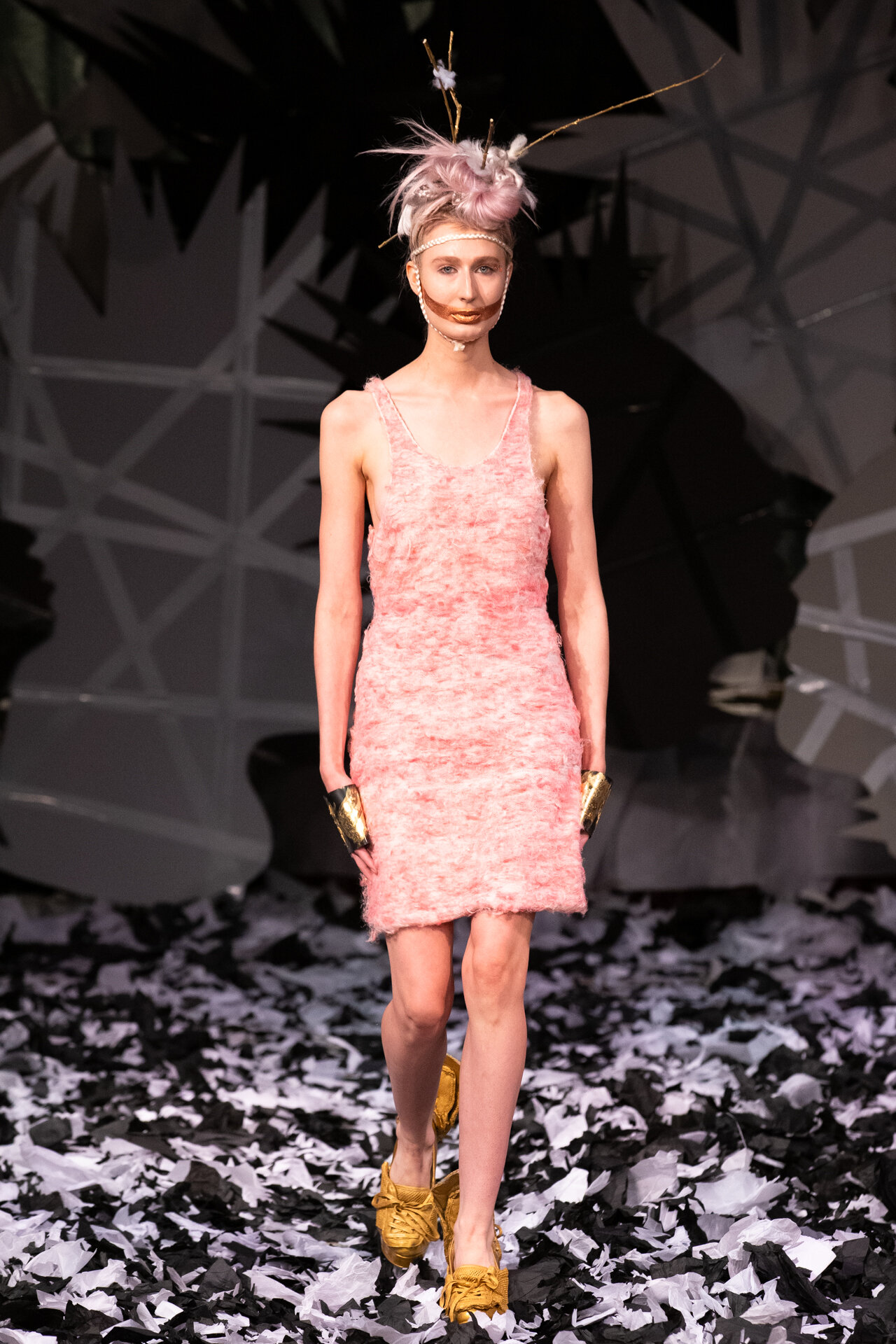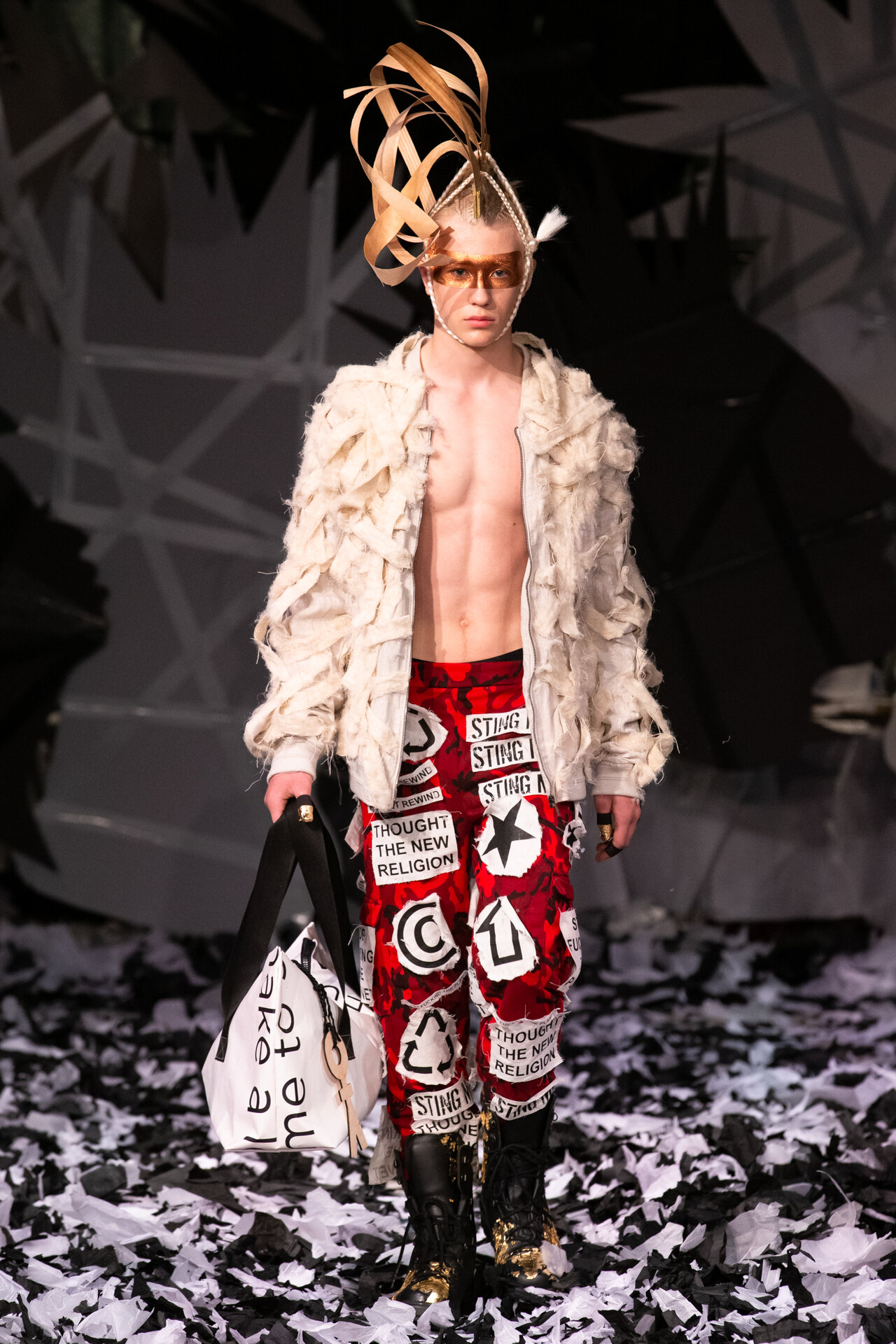ECO INNOVATIONS
VIN + OMI have developed unique eco textiles and processes since 2004. We work holistically and we ensure each process is circular with thought and care put into each stage of the development.
Our textile production is based on science, social and environmental awareness and problem solving.
THE LOTUS PROJECT
The VIN + OMI Foundation has partnered with community coordinators in the Sagaing Region of Burma to develop new ways of producing sustainable organic lotus silk. This project focuses on communities displaced or unsettled by the political and military unrest in Burma and in a small way helps them develop a new industry. Funding was provided to develop lotus lakes and investment in new ways of producing lotus fabric which is kind to the environment, yet less labour intensive.
The project is supported by a local research group who are working with the VIN + OMI foundation to explore new ways of harvesting the lotus plants and experimenting with new eco silk hybrids to produce more affordable textiles.
rPET
We pioneered the development of rPET fabric from waste ocean and river waste plastic in 2004
Our starting point for our rPET fabrics is always the source of the collected plastic. We locate existing clean up projects, or initiate our own projects to clean up rivers or areas of ocean or beaches The collected plastic is processed into a variety of rPET textiles. We produce a wide range of rPET textiles including, rPET bonded chiffon, rPET bonded silk and rPET bonded knit We produce textiles in Asia, USA and Europe with an aim to producing as close to the initial collection of materials to reduce the carbon footprint .
Why produce more plastic ?
For now, plastic is here to stay and lies around the planet in abundance. It will be many years before the problem of waste plastic, and how we deal with it, is addressed. Until then it makes sense to identify where plastic isn’t being recycled properly and make sure it is recycled properly and preferably into something useful.
We also ensure that we use that plastic to produce new textiles that can be produced to higher standards of microfibre bonding.
It is also important to introduce buy back options and detailed responsible care instructions. As better way for producing recycled plastic emerge, our processes will change.
Why rPET ?
Producing rPET uses over 50% less energy than PET fabrics
Around a third less CO2 is produced in comparison to PET production
One of our rPET T shirts uses 11 plastic bottles
Using rPET reduces our dependance on petroleum and other natural resources as a raw material for PET
We can weave a high quality textile that lasts longer and produces minimal microfibres
Existing PET garments in circulation can be turned into rPET diverting them from landfill.
What about microfibers ?
Microfibres pollute the planet’s waterways. That’s a fact. A groundbreaking 2011 study found that microfibers made up 85% of human-made debris on shorelines around the world.
Continuing studies are identifying the devastating effect that microfibres are having on marine life and the resulting impact this has on our own food chain. Approx 1 - 1.5 grams of microfibres are released into the water system when washing a new micro fibre releasing garment.
We have three approaches to greatly reducing the impact of microfibres from our rPET garments;
- We encourage the use of our microfibre catcher when washing our rPET garments. The collected microfibres can then be disposed of away from the water system.
- We produce rPET fabrics that are bonded with a tighter weave and release less microfibres when washed. Garments that are produced with looser weaves, produce more microfibres.
- We have a buy back scheme from future customers that encourage them to sell their garments back to us for recycling.
Innovations like the development of the water free washing machine, micro fibre collecting nano balls and micro fibre sealed fabric could ensure that the release of microfibres from rPET are kept away from the water system and to a minimum.
ORGANIC PLANT BASED FABRICS AND LEATHER
We are focussing on organic plants and naturally occurring components to make a range of plant based leathers and fabrics. We are working and experimenting with a wide range of raw materials including: Chestnuts, Fungi, Algae, Nettles, Seaweed, Brassicas and byproducts of the food industry.
The raw material is readily available in the UK, has minimal impact on the environment, is sustainable, organically produced and has a low carbon footprint from source to production of finished textile and garment / accessories.
Chestnut Leather
One of the first plant based fabrics we have developed is chestnut leather; produced from the discarded casing shells of the horse chestnut. Also outer chestnut seed shells were added which are a byproduct of the chestnut industry.
The raw material is sources locally to our UK studios.
We featured our chestnut leather on the catwalk show We Are Not Sheep collection AW18
Mushroom Leather
We have developed a range of mushroom leathers and mycelium leather
We are currently experimenting with a range of combination fungi to produce a range of finishes and durabilities.



NO KILL FLEECE TEXTILE AND GARMENTS
We obtain our fleece from llama, alpaca and rare breed sheep from the UK that are kept as pet animals on organic smallholdings. The animals live a natural full life and are shorn once or twice a year for their comfort.
The organic, non chemically treated, fleece arrives and is placed in open cages and left overnight in river water. The fleece is then dyed with natural dyes and converted into garments and fabrics using traditional methods.
We vet our pet owners and ensure that they meet our strict guidelines.
Our fleece is often obtained from animals saved from the food chain that need to be clipped of their fleece in hot weather. We only receive fleece in small amounts in summer. We have also incorporated horse and dog clippings into our collections and textiles.
We believe a world without pets would be a sadder place. But we do not endorse breeding programmes or any cruelty, misuse or killing of animals.
SUSTAINABLE ECO BIO DEGRADABLE LATEX
In 2009 VIN + OMI invested in a latex plantation in Malaysia to ensure;
The caretaker village was cared for and financially compensated for its work
Education programmes are provided for the caretaker village for the workers and their children in a broad range of topics
The plantation was replanted with rubber trees and care was taken to ensure organic approaches were used
The latex produced is chemical free
The liquid latex is then used in a variety of textiles including hybrid latex, breathable latex and our Amalgam fabric. We are currently working with an exciting natural plant development as an alternative to latex.
NETTLE AND WEEDS
We grow types of nettle and similar bast fibre plants near our studios in the English countryside. Being in a rural location gives us space to experiment with harvest yields and a variety of hybrid weaves.
One of our first ‘home grown’ fabrics is 4Ganic which was showcased at The State of Fashion in Arnehm Holland in June 2018.
4Ganic contains Common Nettle, Cow Parsley, Yellow Archangel and White Dead Nettle which are harvested, usually in early summer. The raw material is then put thorough the process of retting, breaking scutching and hackling and prepared into yarns. The four types of plant yarns are then combined and hand woven into our 4Ganic textile. The weaving is currently undertaken as part of local back to work training scheme and will be scaled up in 2018/9
Our R & T team are currently working with fibres from the Vicia Faba ( broad bean ) plant which is in its second season of cropping. This locally grown plant is often discarded after the beans have been harvested. We are working with the discarded plant to weave the fibres into new pure and hybrid textile.



HYBRID FABRICS
We continue to experiment and develop new hybrid eco-textiles. The ones we think have longevity and scalability will be developed over the next few years.
Our first hybrid eco- fabric was the Amalgam fabric which fuses our eco-latex to our rPET velvet creating a new textured shell like fabric, velvet soft on the inside, hard on the outside.
This fabric was developed in 2010 and has been used in many non fashion and fashion applications.
NEW DEVELOPMENTS
We are also developing a range of organic hybrids which merge our eco plants textiles. Our recently developed Seakom is a new to market hybrid of seaweed and kombucha created in a range of thicknesses from paper thin to industry grade thickness. The textile has been made with beach collected seaweed that has washed ashore.
ECO PRODUCTS
Pictured is one of our chairs made from mycelium. We use our eco processes to make furniture, wall coverings and products.



















